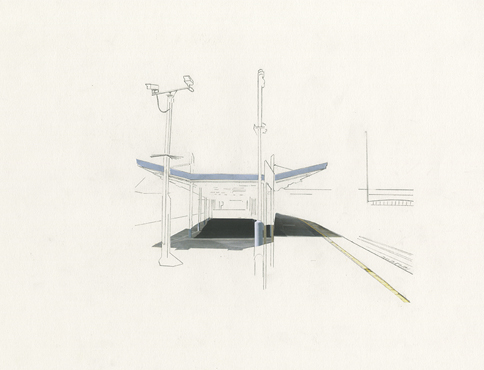Clapham Junction – work on paper
2013
Pencil drawings and collage on paper
Various sizes
Clapham Junction is Europe’s busiest interchange station. Over 20 million people annually use it as a conduit to their journey – a place to change trains. For more passengers than any other station, it is neither a start nor end point. It is not a destination but somewhere that facilitates their passage to somewhere else. 2000 trains pass through the station each day. Although most do at least stop, the experience for half of the passengers who use the station is one that is not connected to its vicinity; it is a blip on their journey; somewhere one hopes not to stay too long. But if we choose to linger, what kind of place is Clapham Junction, and who authors the space we recognise as such?
 I was drawn to investigate what kind of place Clapham Junction is, and began by making this set of drawings and collages about the station and the views from the platforms. I also made a few drawings of Streatham Hill station, the station I travelled from to reach Clapham Junction.
I was drawn to investigate what kind of place Clapham Junction is, and began by making this set of drawings and collages about the station and the views from the platforms. I also made a few drawings of Streatham Hill station, the station I travelled from to reach Clapham Junction.





